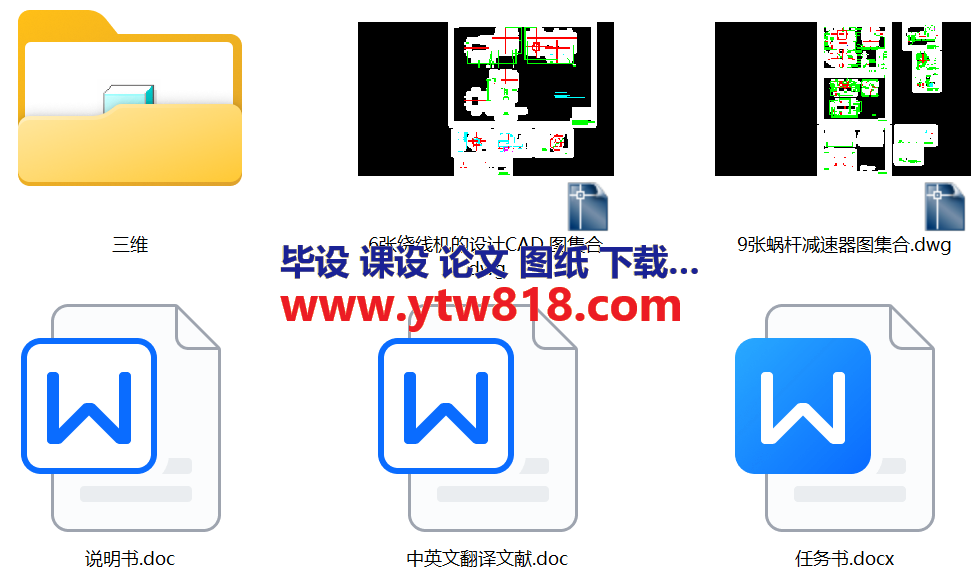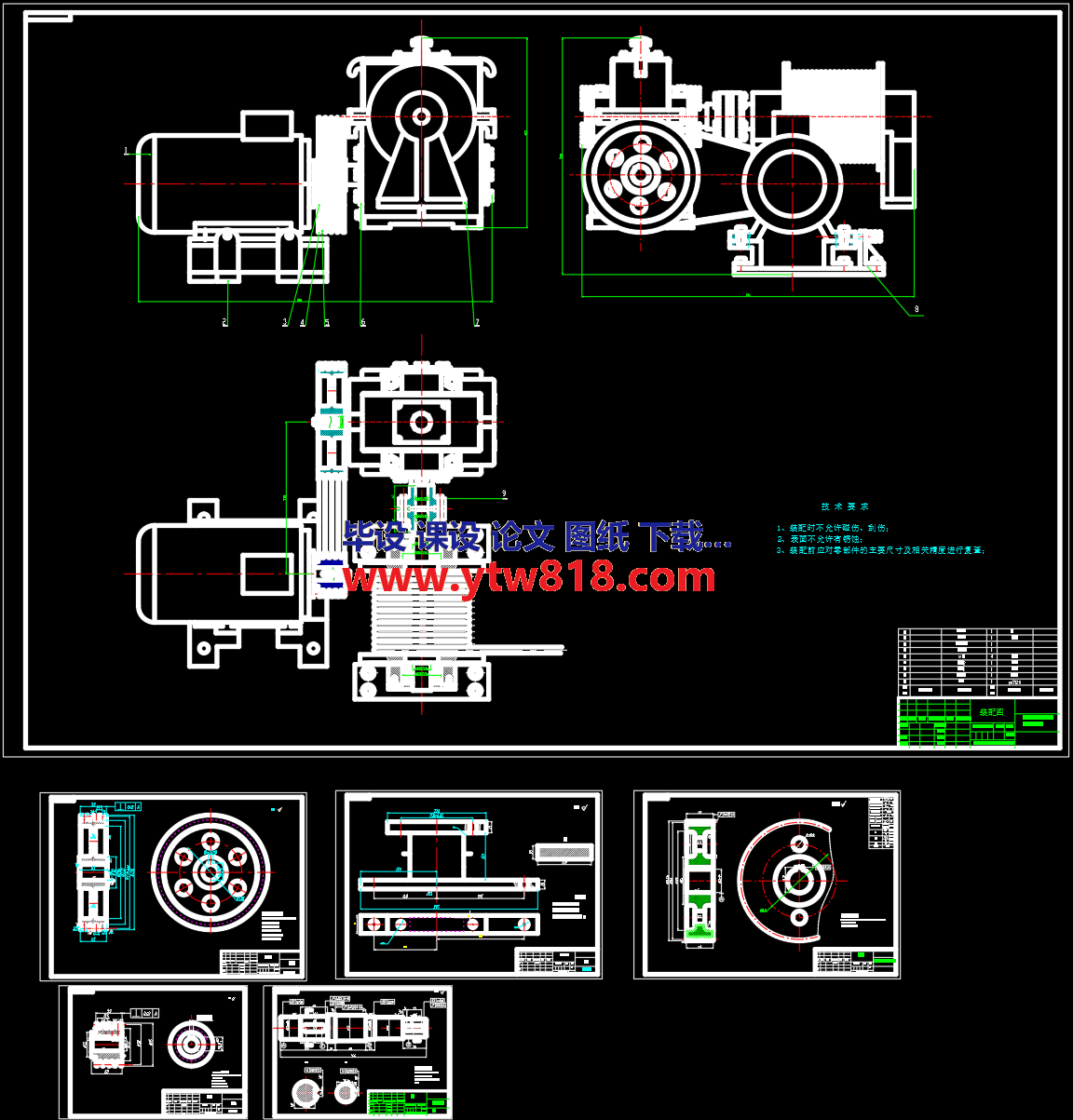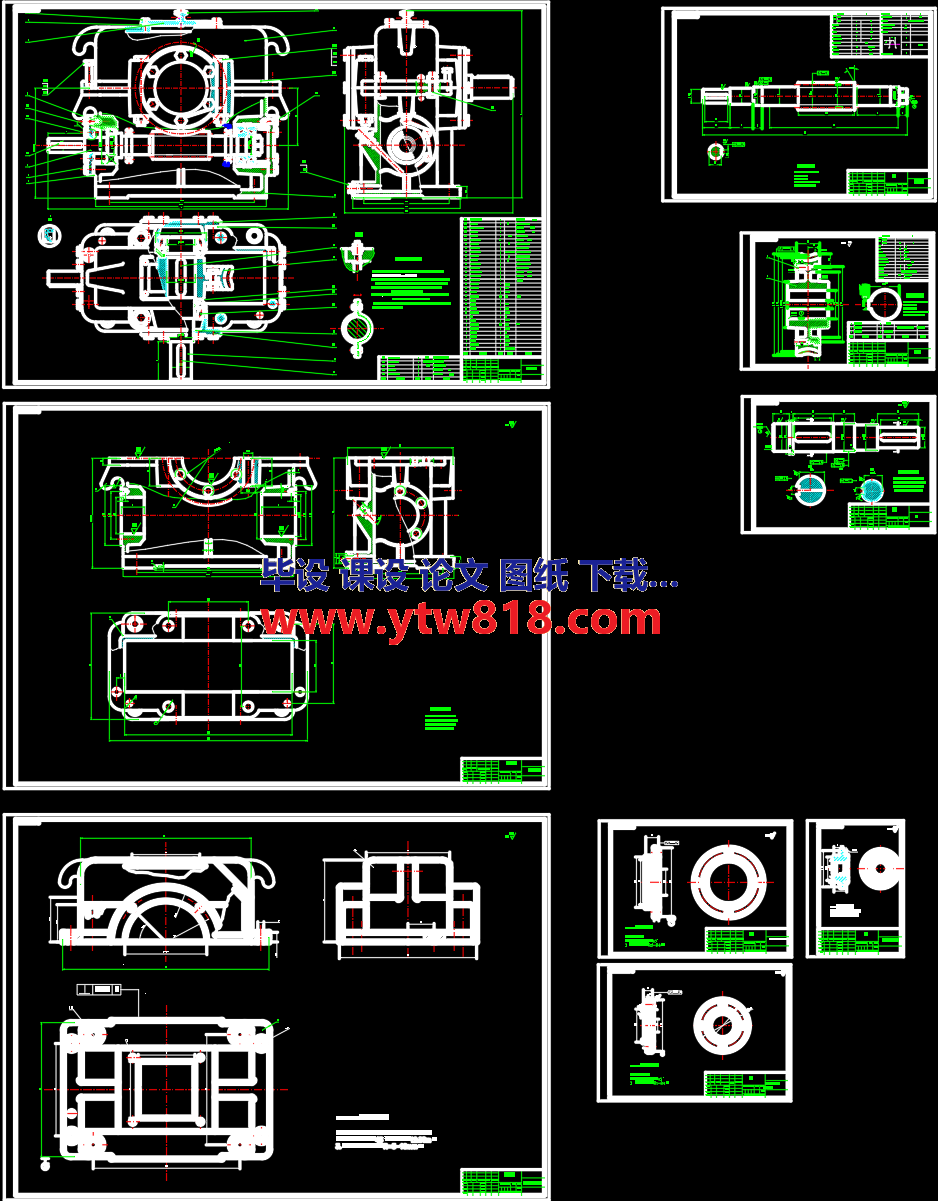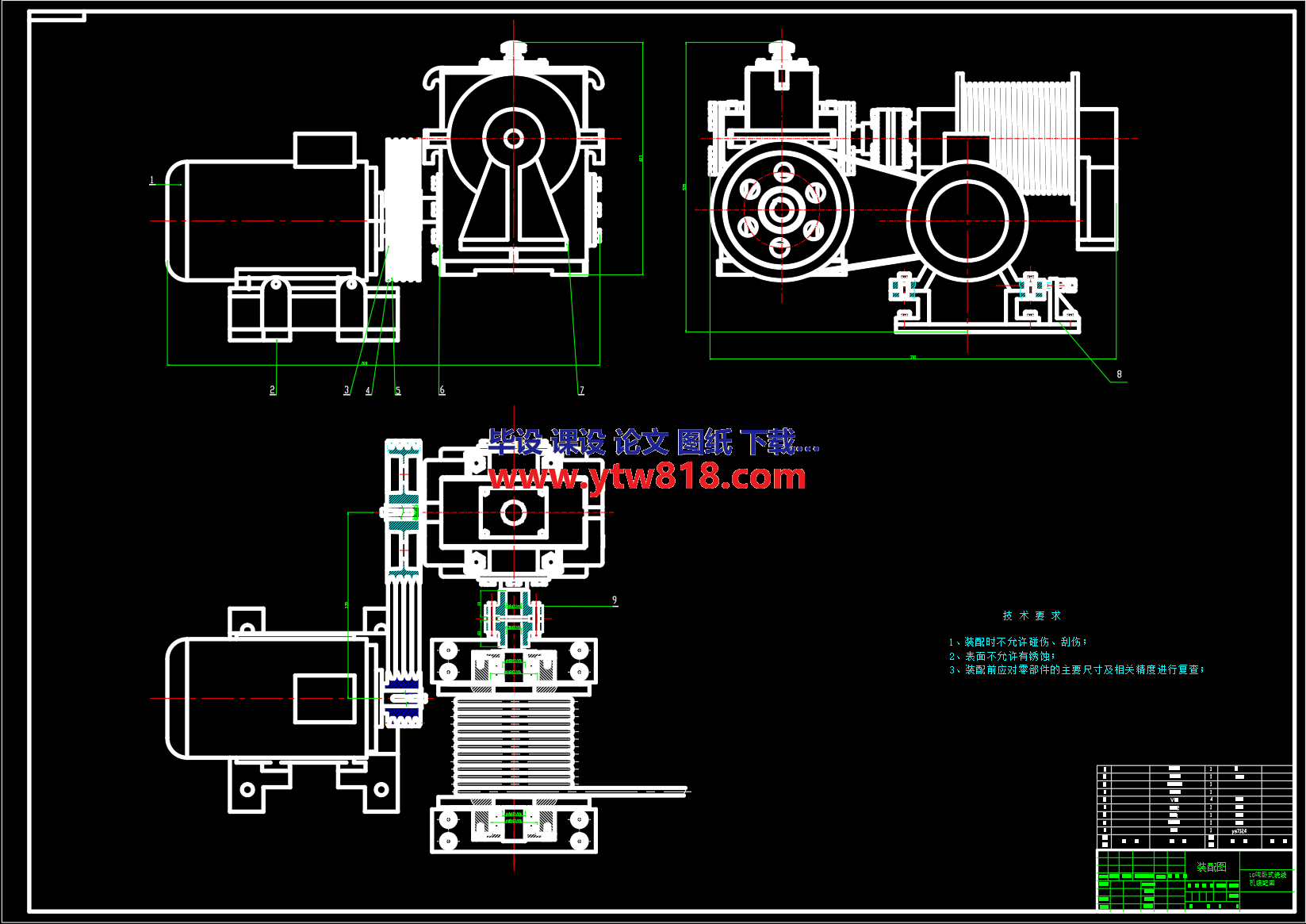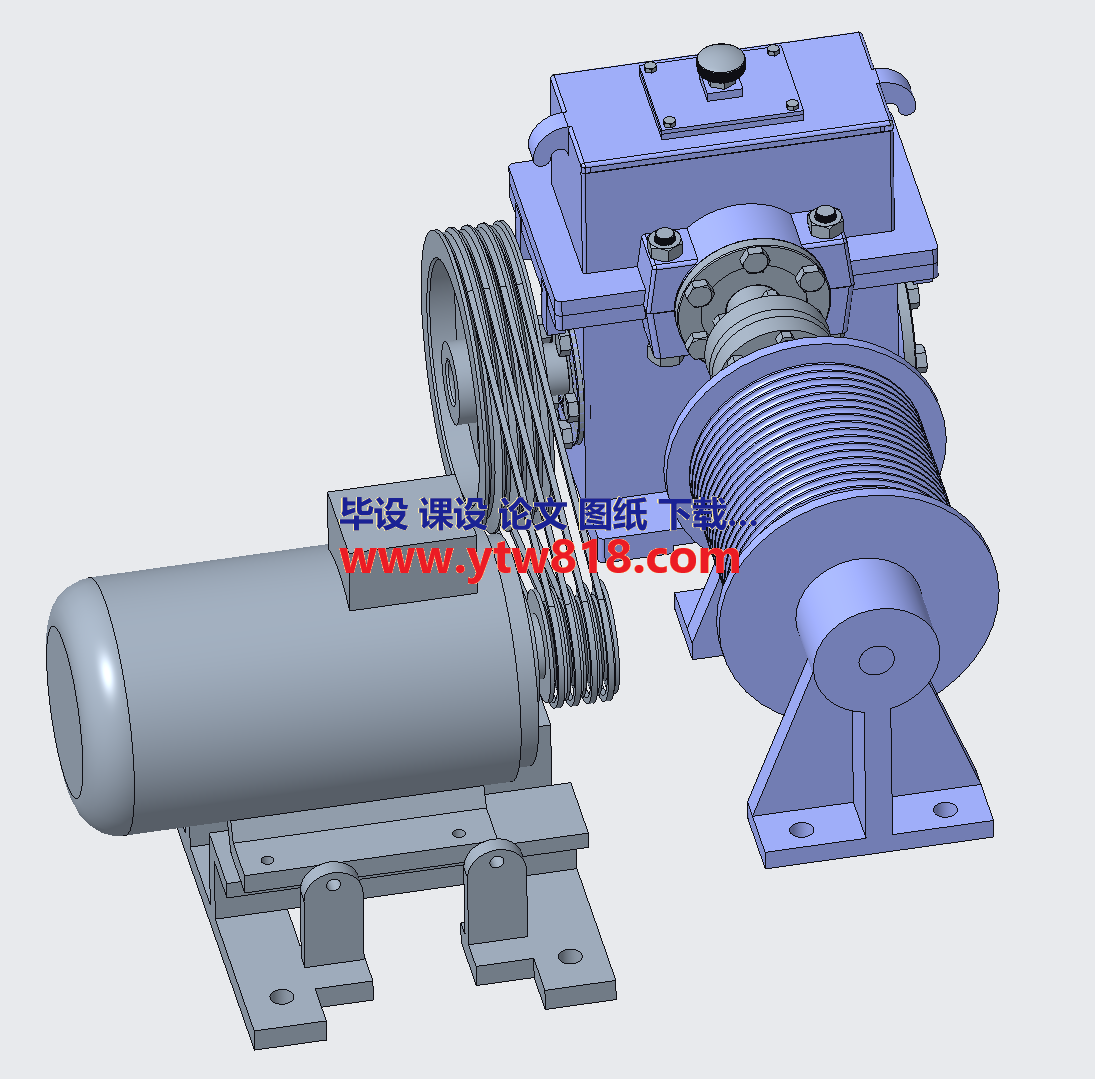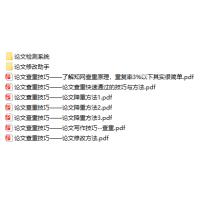 毕业设计辅助工具_免费论文文案文章修改神器_毕业设计辅助软件_论文查重...¥0
毕业设计辅助工具_免费论文文案文章修改神器_毕业设计辅助软件_论文查重...¥0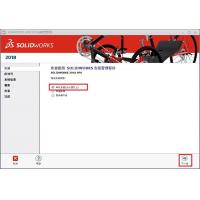 solidworks2018 中文版¥0
solidworks2018 中文版¥0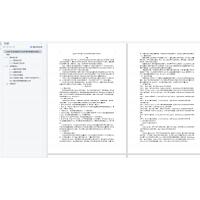 CA6140车床拨叉831006零件夹具设计说明书——9页...¥0
CA6140车床拨叉831006零件夹具设计说明书——9页...¥0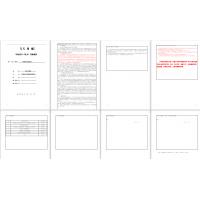 机械设计制造及其自动化毕业设计(论文)开题报告...¥0
机械设计制造及其自动化毕业设计(论文)开题报告...¥0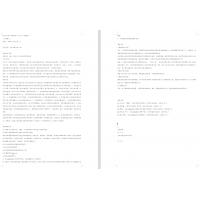 XX大学理工类毕业设计(论文)开题报告——自行车配件管理系统...¥0
XX大学理工类毕业设计(论文)开题报告——自行车配件管理系统...¥0 课程设计 CA6140车床拨叉831002的加工工艺及钻φ25孔的钻床...¥0
课程设计 CA6140车床拨叉831002的加工工艺及钻φ25孔的钻床...¥0 补价¥1.00
补价¥1.00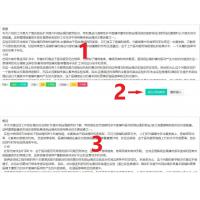 毕业设计辅助工具_免费在线论文文案文章修改神器_毕业设计辅助软件_AI...¥0
毕业设计辅助工具_免费在线论文文案文章修改神器_毕业设计辅助软件_AI...¥0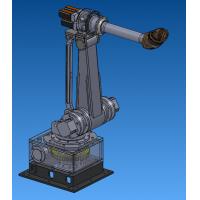 六自由度工业机器人设计【说明书(论文)+CAD图纸+SolidWork...¥45.00
六自由度工业机器人设计【说明书(论文)+CAD图纸+SolidWork...¥45.00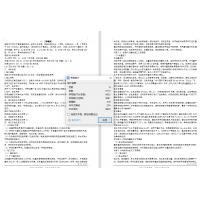 陈家沟桥梁施工组织设计方案.doc...¥0
陈家沟桥梁施工组织设计方案.doc...¥0摘要
绕线机是电气生产行业常见加工设备,其结构、控制系统、功能随着行业生产工艺的需求,迫使绕线机生产单位加大技术投入和研发,以适应现代漆包线加工的高品质要求,从传统机械式、数控型、半自动型、全自动机型,绕线加工早已不再是费时费力的工作。
目前我国绕线机生产单位已超百家,但有将近一半的生产单位没有技术研发能力,技术停留在抄袭和仿制阶段,造成了市场机种单一,产品无论是外观还是配置无技术亮点,绕线机技术的核心是控制系统,目前国内厂家大多采用由系统供应商提供的成套控制系统,产品标准一旦制定无法根据客户工艺要求作修改,由于部分控制系统供应商对绕线机行业的工艺要求并不熟悉,导致了许多好看而并不实用的功能,绕线机厂家对控制系统的技术应用掌握程度也影响着制造工艺,目前市场上多见的是普通数控型、CNC机型和厂家自制控制系统的机型。
关键词:绕线机,总体设计,减速器,传动部分
Abstract
Winder common electrical manufacturing industry and processing equipment, the structure, control system, features a production process with the needs of the industry, forcing Winder production units to increase investment in technology and research and development to meet the high quality demands of modern wire processing, from traditional mechanical, NC-based, semi-automatic, automatic machines, wire processing is no longer time-consuming work.
At present, China Winder production units exceeded one hundred, but nearly half of the production units no R & D capabilities, a technical stopover in copying and imitation stage, resulting in a single market models, both the appearance and configuration of the product without technical highlights around ray machine core technology is the control system, the current domestic manufacturers to adopt most complete control system provided by the system vendor, product standards, once developed can not be modified according to the customer process requirements, as part of the control system supplier of Winder business process requirements not familiar with, do not cause a lot of good-looking and practical features, winding machine manufacturers to grasp the extent of the application of technology control system also affects the manufacturing process, more common on the market today is a common type of CNC, CNC models and manufacturers homemade control system models.
Keywords: Winder, overall design, reducer, transmission parts
目录
第1章 绪论7
1.1 课题目的、意义7
1.2 国内外研究现状7
1.3 目前存在的问题10
1.4 研究方法12
1.5 设计方案12
第2章 初步计算13
2.1 毕业设计技术要求13
2.2 钢丝绳的选择13
2.3 滑轮卷筒的计算14
2.4 传动方案分析15
第3章 电机的选择及传动装置的运动和动力参数的计算16
3.1 电机类型和结构形式的选择16
3.2 选择电机的容量16
3.3 确定电机转速16
3.4 传动比分配17
第4章 带传动的计算19
4.1 带传动设计19
4.2 选择带型20
4.3 确定带轮的基准直径并验证带速20
4.4 确定中心距离、带的基准长度并验算小轮包角21
4.5 确定带的根数z22
4.6 确定带轮的结构和尺寸22
4.7 确定带的张紧装置22
第5章 传动零件的设计计算25
5.1 蜗杆减速器的设计25
5.1.1 选择蜗杆传动类型25
5.1.2 选择材料25
5.1.3 按齿面接触疲劳强度进行设计25
5.1.4 蜗杆与蜗轮的主要参数与几何尺寸27
5.1.5 校核齿根弯曲疲劳强度27
5.1.6 验算效率28
5.1.7 精度等级公差和表面粗糙度的确定28
5.1.8 热平衡核算28
5.2 轴的设计计算29
5.2.1 连轴器的设计计算29
5.2.2 输入轴的设计计算29
5.2.3 输出轴的设计计算32
5.3 滚动轴承的选择及校核计算35
5.3.1 计算输入轴轴承35
5.3.2 计算输出轴轴承37
5.4 键及联轴器连接的选择及校核计算38
5.4.1 连轴器与电机连接采用平键连接38
5.4.2 输入轴与联轴器连接采用平键连接38
5.4.3 输出轴与联轴器连接用平键连接39
5.4.4 输出轴与涡轮连接用平键连接39
第6章 减速器结构与润滑的概要说明40
6.1 箱体的结构形式和材料40
6.2 铸铁箱体主要结构尺寸和关系40
总论42
参考文献43
致谢44
………………
